-
Dust and your Eyes
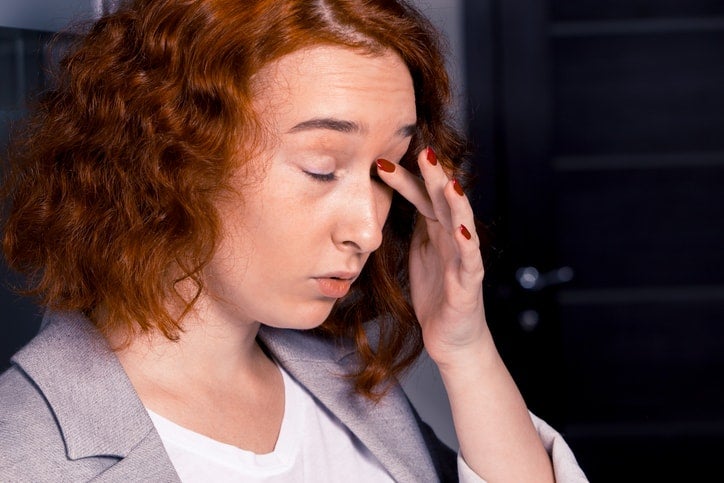
Whether it’s an allergic reaction or a speck that gets stuck, some time or another we all have to deal with dust affecting our eyes. That’s why it’s smart to be prepared, and know what to do if dust is causing a problem for you. How do you deal with dust when it comes to your eyes?
Is it an allergy or a contaminant? Sometimes the answer to that question is not very clear cut. Itchy, watery, uncomfortable eyes can mean that you’re allergic to something, or they could mean that there’s a foreign body in one or both of your eyes.
If it’s an allergy to dust, you’ll also experience allergic rhinitis. You’ll sneeze, cough, have a headache from sinus congestion, experience difficulty breathing, and have a runny nose. As to your eyes, allergic conjunctivitis will cause inflammation, watering, itching, and redness. Allergies can come on at any age, but they usually start under the age of 30.
What can you do about allergy eyes? A dust allergy is actually an allergy to dust mites, the microscopic bugs that live in house dust. To lessen your allergies, take steps to control the dust and dust mites in your home. Use allergen-proof bed and pillow covers, wash bedding and stuffed animals frequently, keep the humidity of your house low, vacuum regularly, and use a damp or oiled mop or rag to clean up dust. Reduce clutter, consider removing carpeting, and install a high-efficiency filter in your HVAC. Talk to your eye doctor, who may direct you to take medication, like antihistamines or corticosteroids.
Sometimes the problem isn’t so much the effect dust has on your eyes as it is that you’ve got some dust in your eyes. It’s easy to get dust in your eye, whether at home, at work, or even outside. Whenever it feels like there’s something in your eye, there are several steps you can take to relieve your discomfort.
- First, wash your hands, then inspect your eye. Be careful not to rub it, so that you don’t scratch your cornea, and always keep tweezers and cotton swabs away from your eye. Try to find the location of the object, looking near the eyelids and inside your upper and lower eyelids.
- Try to flush whatever it is out. Fill your hands with clean water and flush your eye a few times, patting dry with a clean towel. Check to see whether you still feel like there’s something in your eye. Often, flushing out your eyes is all that’s necessary to solve your problem.
- If it’s still there, move your eyelids around. Gently pull your upper eyelid over the lower one, rolling your eye upwards. Release and see if the item has been dislodged.
- When you can’t seem to get the dust out of your eye, see a doctor. If the object lodged in your eye is sharp or large, you should seek immediate medical attention, at the emergency room or with your eye doctor. Even if it’s just dust, your eye doctor can help remove it from your eye.
If you’re looking for an eye doctor, Gerstein Eye Institute is here to help. Since 1968, the Gerstein Eye Institute has been providing exceptional ophthalmologic care to patients in the Chicago area. With decades of experience in ophthalmology, our certified professional staff members work hard to provide the kind of personalized care that keeps patients coming back year after year, eventually entrusting the eye health of their children and grandchildren to us as well. To schedule an appointment, call us at (773) 973-3223 or contact us through our website.
-
How to Treat your Bloodshot Eyes

Everyone’s eyes get bloodshot or red from time to time, and most of the time it’s pretty easy to figure out why. Maybe you’ve been around cigarette smoke, or you’ve been swimming in a chlorinated pool, or your allergies are flaring up. Red or bloodshot eyes are typically harmless, but sometimes, they indicate a condition that warrants medical attention. How do you know if you can treat your bloodshot eyes at home or if it would be better for you to see an eye doctor?
- If your eyes are seeping or crusty, with yellow, green, or brown mucus it could be a sign of infection.
- Pain or unusual tenderness in or around your eyes might warrant a doctor’s attention.
- An unusual sensitivity to light, along with red eyes, could indicate a serious issue.
- If you have a fever or overall sickness in addition to your red eyes, you should seek medical care.
- Exposure of anyone in your household to pink eye should cause you to talk to your doctor if your eyes become red.
- Redness or discomfort that lasts for more than a week and doesn’t respond to home remedies warrants a doctor visit.
Red eyes can be an indication of a serious medical condition. There is an acute form of glaucoma, for instance, causes red eyes, along with severe eye pain. It also manifests with headache, decreased or blurred vision, rainbows or halos in the vision, and nausea and vomiting. If you have red eyes with these symptoms, you should see a doctor as soon as possible. Uveitis, an inflammation of the uvea, is another serious condition. Symptoms of uveitis can include light sensitivity, decreased vision, and eye pain, in addition to red eyes. Uveitis can be caused by an underlying systemic illness and can cause numerous complications including cataracts, retinal detachment, and elevated eye pressure, all of which can result in permanent vision loss. Eye injury or infection and dry eye can also cause red eyes.
If your bloodshot eyes don’t seem to indicate a serious problem, you can try some home remedies or over-the-counter treatments to help relieve the redness and discomfort. Artificial tears can help with dry eyes, and antihistamine eye drops can relieve the red eyes of seasonal allergies. Cool compresses or washcloths on your closed eyes can also offer some relief. To avoid getting red eyes in the future, wash your hands frequently to prevent eye infections, and try to steer clear of irritants like smoke, fumes, pollen, dust, chlorine, or pet dander.
People tend to assume that red eyes will go away on their own, or with some treatment at home, but that’s not always the case. If you think your bloodshot eyes may require medical attention, the Gerstein Eye Institute in Chicago can help. Since 1968, the Gerstein Eye Institute has been providing exceptional ophthalmologic care to patients in the Chicago area. With decades of experience in ophthalmology, our certified professional staff members work hard to provide the kind of personalized care that keeps patients coming back year after year, eventually entrusting the eye health of their children and grandchildren to us as well. To schedule an appointment, call us at (773) 973-3223 or contact us through our website.
-
Answering Common Questions About Dry Eye
Answering Common Questions About Dry Eye
If you suffer from dry eye, then you know how uncomfortable and frustrating the condition can be. Fortunately, you don’t have to simply accept your symptoms. There are many things your eye doctor in Chicago can do to help you get the relief you need. Here are the answers to questions dry eye sufferers often have about their conditions, including what kind of eye care can help with the symptoms.
Is dry eye a medical condition?
Although your eyes can feel dry for a number of different reasons, chronic dry eye is a medical condition that occurs when there is a problem with the amount or quality of tears that your eye produces. You can also develop chronic dry eye if there is a problem with the tear film in your eyes. There are several different factors that can trigger chronic dry eye, including hormonal changes and inflammation in your eyes. Some health conditions, including diabetes, rheumatoid arthritis, and lupus, can also increase the risk of developing dry eye.
What are the symptoms?
Dry, itchy eyes are the most obvious symptoms of dry eye, but there are other signs, as well. You may notice that you constantly feel like something is caught in your eye or that your eyes burn. You may also experience blurry vision and sensitivity to light, and struggle to see when you’re driving at night. If you wear contacts, they may feel uncomfortable. Some people don’t experience dry eyes at all but have watery eyes, instead. This is usually because the eyes are trying to overcompensate for dryness by producing more tears.
Are treatments available?
If you think you could have chronic dry eye, it’s important to see your eye doctor as soon as possible. Dry eye is a progressive disease and could affect your vision if left untreated. There are several treatment options available that can slow the progression of your symptoms and protect your eyesight, including artificial tears, prescription medications, and tear duct plugs. Your eye doctor will determine which treatments are right for you based on your symptoms and the condition of your eyes.
-
What to Consider When Choosing Your IOLs
Millions of Americans suffer from poor eyesight due to cataracts, but many will enjoy restored vision after undergoing surgery for intraocular lenses or IOLs. If you’re planning to see an ophthalmologist for intraocular implants in Chicago , then keep reading to learn what you should consider when selecting the right IOLs for you.
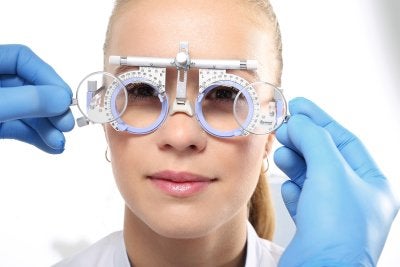
Insurance Coverage
There are several types of IOLs, and not all are covered by insurance. However, the cost of the most traditional option, which is a monofocal lens, is covered by most insurance companies and Medicare. For this reason, if the cost of your IOLs will affect your decision, then this option may be best for you. Monofocal lenses are made to provide patients with the best possible corrected vision at near, far, or intermediate distances.
Device Usage
If you spend a significant amount of time using a computer, tablet, or smart phone, then your ophthalmologist may recommend monofocal intraocular lenses that are set to provide you with monovision. In this situation, one lens is designed to provide near vision and the other one distance vision. However, if you want results that provide you crisp vision, then a monovision approach may not be for you.
Treatment Goals
If you’re hoping to eliminate the need for glasses by undergoing cataract surgery, then your doctor may recommend multifocal lenses. These are a newer variety of IOLs that may be able to correct both distance and near vision for the patient, as well as reduce or eliminate the need for eyeglasses. These IOLs are quite expensive and are rarely completely covered by insurance.
Astigmatism Level
Toric IOLs are intraocular lenses that provide the wearer with added correction for astigmatism. Commonly, people who have moderate to advanced astigmatism prefer toric IOLs, but these may not be fully covered by insurance.
Driving Habits
If it’s important for you to be able to drive at night, then consider that multifocal lenses can have side effects like decreased contrast sensitivity, glare, and halos around lights. If you regularly drive at night, then monofocal IOLs may be the better choice for you.
-
Tips for Avoiding Common Eye Injuries in Sports
Sports are a great way to get physically fit and connect with peers, but these activities are also risky. Thousands of sports-related eye injuries are reported each year in the U.S. Many of these are preventable. During Sports Eye Safety Month this April, talk to an eye doctor in Chicago about protecting your vision. Your ophthalmologist can help you learn about the potential risks of your favorite sports and how to reduce these risks.
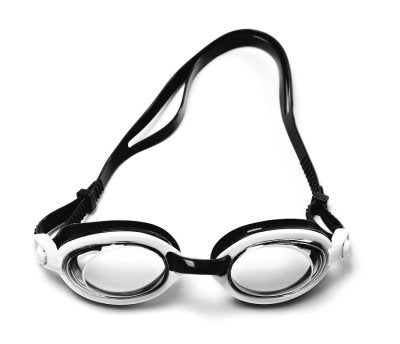
Get Informed About the Risks
Ophthalmologists recognize low risk, high risk, and very high risk categories of sports. A low-risk sport is one that involves no airborne objects, no objects that are swung such as racquets, and no bodily collisions. Some common examples are swimming, cycling, and track and field. High-risk sports do involve those risk factors. A few examples are baseball, hockey, football, and fencing. A very high-risk sport is one that involves risk factors of eye injuries and does not require participants to wear eye protection, such as boxing and martial arts. When you see an eye care professional, he or she can advise you as to the types of eye injuries that might occur with your chosen sport. Most sports-related injuries are caused by blunt force trauma. Penetrating injuries are less common in sports, but cannot be completely ruled out. There has been at least one instance of a fishing hook penetrating an eye .
Choose Protective Eyewear
Protective eyewear should always be worn for high-risk and very high-risk sports, even if the sports organization does not require it. It isn’t wise to rely solely on face masks as a means to prevent eye injuries, since sports equipment or a teammate’s fingers could slip through the mask. Protective eyewear should be specific to the sport you’ve chosen. For example, your eye doctor will recommend sports goggles with polycarbonate lenses for playing basketball and racquet sports.
Encourage Compliance in Children
Some children may resist wearing protective eyewear, especially if their teammates aren’t wearing it or if they feel self-conscious about their looks. To encourage compliance, parents can explain what might happen if a child fails to wear protective eyewear. Older children may be told that, if they wear regular eyeglasses, these can shatter and penetrate the eyeball. Parents can convince younger children to protect their eyes by having them shut their eyes and try to perform common tasks without the benefit of sight.
-
Tips for Preventing Dry Eye Symptoms This Season
Once the cold, dry weather of winter arrives, many people are forced to make changes to keep their eyes comfortably lubricated. If you’re thinking about visiting your eye doctor in Chicago about dry eye treatment, then continue reading to learn what else you can do to prevent dry eye symptoms this season.
While outdoors, dry winter winds can take quite a toll on your eye lubrication, so consider wearing sunglasses during the day and glasses at night when you head outside. Additionally, wearing contact lenses for extended periods of time can lead to dry eye symptoms, so consider favoring your eyeglasses more during the winter and wearing your contact lenses for shorter durations.
Getting enough fluids is important for your overall health year-round but is particularly significant when you want to prevent your eyes from feeling dry and gritty. Also, if you want to avoid dry eye symptoms, then be sure to include plenty of vitamins A, C, and E in your diet this season, as well as foods containing omega-3 fatty acids. Finally, if the air in your home feels dry, run a humidifier as often as necessary to keep your indoor humidity levels within a comfortable range.
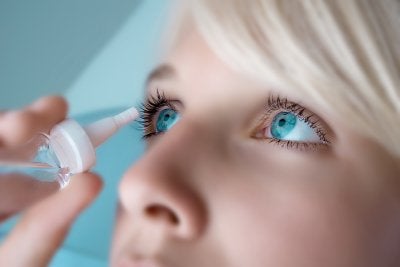
-
A Look at the Connection Between Diabetes and Eye Health
November marks the beginning of National Diabetes Month and Diabetic Eye Disease Month. These health awareness designations are intended to encourage individuals to become informed of their own health risks and the potential consequences of poorly controlled diabetes. In recognition of these designations, take the time to check the date of the last comprehensive eye exam you had at an optical center in Chicago . If it’s been more than one year, it’s time for another visit with your ophthalmologist.

Diabetes
Diabetes is a serious disease that can lead to life-altering and life-threatening complications, including eye health problems. Diabetes occurs when the body can no longer make enough insulin or use insulin properly, which results in high blood sugar levels. Over time, high blood sugar levels can cause all sorts of damage to the body, including to the optic nerve and the tiny blood vessels in the eyes. Unfortunately, many people have diabetes or prediabetes without realizing it. In addition to making regular appointments with an ophthalmologist, consider talking to your family physician about blood glucose screenings.
Diabetic Retinopathy
Practicing good eye care habits is important, but so too is controlling blood glucose levels carefully. Uncontrolled diabetes greatly increases the risk of diabetic retinopathy, which causes the blood vessels in the eyes to swell, leak blood and other fluids, and close off entirely. Abnormal new blood vessels can also form; these do not work properly and they may be accompanied by scar tissue development. If you experience blurry vision or floaters, see your eye doctor promptly.
Cataracts
The lens of a healthy eye focuses light on the retina, which allows for clear vision. If the lens becomes cloudy, it cannot focus light properly and so vision becomes distorted. A cloudy area of the lens is called a cataract. Diabetes increases the risk of cataract development because high blood sugar levels can result in undesirable changes to the lens.
Glaucoma
Glaucoma is a collection of eye diseases that are strongly associated with increased intraocular pressure, or pressure within the eye. These diseases develop as damage is inflicted on the optical nerve. The longer a person lives with diabetes, the higher the risk is of developing glaucoma.
-
Taking Care of Your Eyes as You Age
Did you know that September has been designated as Healthy Aging Month? Its purpose is to remind people that it’s never too late in life to take control of their wellness. One commonly overlooked aspect of aging is its impact on your eyes. Visiting an ophthalmologist in Chicago regularly is important at every stage of life, but it’s particularly crucial as you grow older. Millions of Americans face blindness because of age-related vision changes. Scheduling a comprehensive exam every year with your eye doctor will help you manage your vision health. Not only can your ophthalmologist diagnose problems early on, but he or she can also provide some general eye care tips to help you protect your sight.
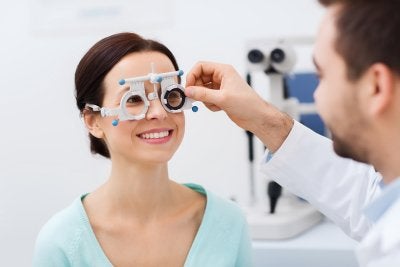
Kick the Habit
Your ophthalmologist might advise you to quit smoking. If you smoke, you should know that the habit directly increases your risk of developing cataracts and age-related macular degeneration. Tobacco use can also indirectly increase your risk of vision problems, such as by making you more susceptible to cardiovascular diseases that affect the health of your eyes. Quitting smoking is hard, but dealing with the health consequences of smoking is far worse. By quitting, you’ll improve the health of everyone around you as well as your own health. If you’re having trouble quitting or you need a little more convincing, your eye doctor may refer you to your primary care physician, who can connect you with appropriate resources in your community.
Pay Attention to Your Diet
When you were younger, you might have consumed sugary sodas and baked goods without a second thought, but the body of an older adult is less forgiving. You may have already realized that eating healthier is better for your energy levels, mood, and cardiac health, but it’s also good for your eyes. Certain foods are rich in the nutrients that your eyes need. These include cold water fish like salmon and tuna, dark green leafy vegetables like kale and spinach, and citrus fruits like kiwi and oranges. Eggs are also good for eye health because they contain lutein and zeaxanthin. These nutrients may offer some protection against age-related macular degeneration.
Manage Your Medical Conditions
If you’re undergoing regular wellness exams at your doctor’s office, then you might already know if you have high blood pressure, abnormal cholesterol levels, or high glucose levels. If so, it’s important to work with your doctor to manage these problems because they can affect your eye health.
-
Understanding Dry Eye Syndrome
Dry eye syndrome is a condition frequently treated by eye doctors. If you are looking for an ophthalmologist to receive dry eye treatment near Chicago, you may have questions about this disorder. Watch this video to understand the nature of dry eye syndrome.
Your eyes have three layers of tears. The reason that most people develop dry eyes is the deterioration of the mucin cells, which make up the bottom tear layer. As you age, these cells can begin to fail, resulting in a reduction of your tear production and a feeling of dryness in your eyes. Eye doctors often recommend artificial tears to provide dry eye treatment for mild cases of this condition.
-
Sunglasses: More than Just Fashion
July is UV Safety Month, which serves to remind individuals of the importance of protecting themselves from the sun’s harmful rays. Ultraviolet (UV) radiation is a type of energy transmitted by the sun. Tanning lamps and tanning beds are also major sources of UV rays. There are three main types of UV rays, two of which can have serious health consequences for people. It’s common knowledge that excessive exposure to sunlight increases the risk of skin cancer, but it’s just as important to protect the eyes from these harmful rays. The next time you visit an optical center in Chicago for an eye exam or LASIK consultation, consider talking to your eye doctor about how you can protect your eyes from UV rays.
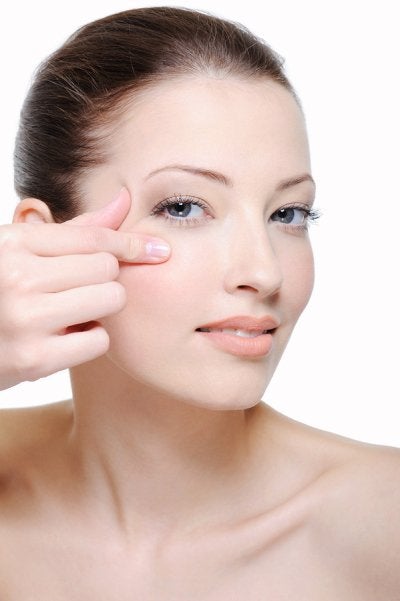
Identifying the Dangers of UV Rays
During UV Safety Month, take a few minutes to learn about the ways unprotected sunlight exposure can harm the eyes. UV rays can damage the eyes in several different ways. They increase the risk of cataract development, which are cloudy areas on the lenses. They can cause photokeratitis, which results in temporary vision loss. UV rays can even increase the risk of macular degeneration, pinguecula (yellow bumps on the eye), and pterygia (disfiguring bumps that cause blurry vision).
Protecting Yourself from UV Rays
It’s commonly thought that protection from UV rays isn’t as important on cloudy days or during the winter. In fact, a significant percentage of UV rays can still penetrate your eyes and skin on cloudy days. Likewise, cold temperatures do not mitigate the effects of UV rays on your eye health. For optimum eye care , your eye doctor is likely to recommend that you wear protective sunglasses every time you go outdoors. A wide-brimmed hat is also a good idea. Choose wraparound-style sunglasses that protect your eyes from all angles. Select a pair that is labeled to offer 100 percent UV protection or ask your eye doctor for recommendations.
Protecting Kids from UV Rays
Children are even more susceptible to eye damage from UV exposure compared to adults. Protect your child’s eyes by encouraging him or her to wear sunglasses that block UV rays. Let your child choose the style and color of sunglasses, provided they are labeled for 100 percent UV protection. Additionally, let your child choose a wide-brimmed hat to wear outdoors for even better protection.
